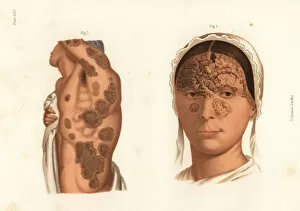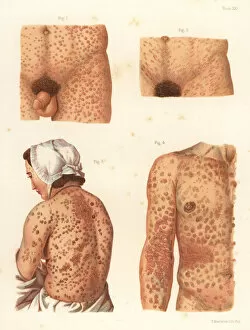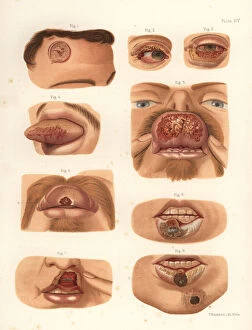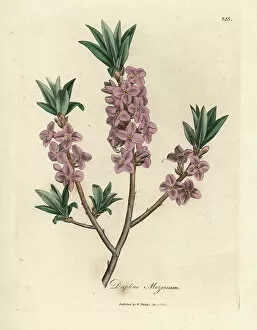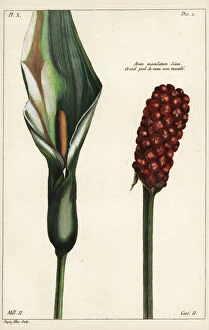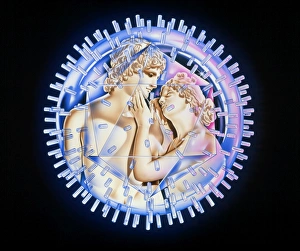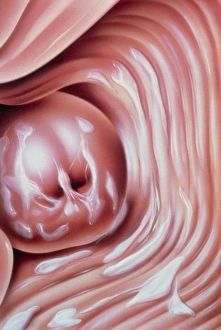Venereal Collection
"Unveiling the Hidden Enemy: The Venereal Menace of Syphilis" In the microscopic world, a sinister bacterium known as the Syphilis bacterium (Treponema pallidum) lurks
All Professionally Made to Order for Quick Shipping
"Unveiling the Hidden Enemy: The Venereal Menace of Syphilis" In the microscopic world, a sinister bacterium known as the Syphilis bacterium (Treponema pallidum) lurks, causing havoc in human bodies. Through the lens of a TEM (Transmission Electron Microscope), its treacherous form is revealed, reminding us of the unseen dangers that lie within. Traveling back to the 1920s, we encounter a chilling projection slide warning about Venereal Disease. In an era when knowledge about sexually transmitted infections was limited, these educational tools aimed to shed light on this silent epidemic. Tubercular syphilis symptoms leave their mark on afflicted individuals' bodies. Painful sores and lesions serve as haunting reminders of this insidious disease's devastating effects. Similarly, syphilis manifests itself through various symptoms across different stages - from disfiguring chancres on faces to pustules scattered throughout one's body. During World War II, even national security campaigns highlighted how venereal diseases could jeopardize soldiers' release dates. A powerful poster reminds us that VD can delay freedom and serves as a stark reminder of society's struggle against these infections during wartime. Amidst all darkness, nature offers glimpses of hope and beauty. Pink-flowered mezereon (Daphne mezereum) blooms with resilience despite its association with syphilitic treatments in history. Cuckoo-pint (Arum maculatum), though visually captivating with its unique appearance, has been linked to early medicinal attempts against venereal diseases. Delving into medical literature by Baron Jean Louis Alibert reveals illustrations depicting clusters of pustules caused by secondary period syphilis - a testament to humanity's ongoing battle against this ancient scourge. As we explore these historical hints surrounding "venereal, " let us remember that education and awareness are our strongest weapons against the persistence of sexually transmitted infections.


